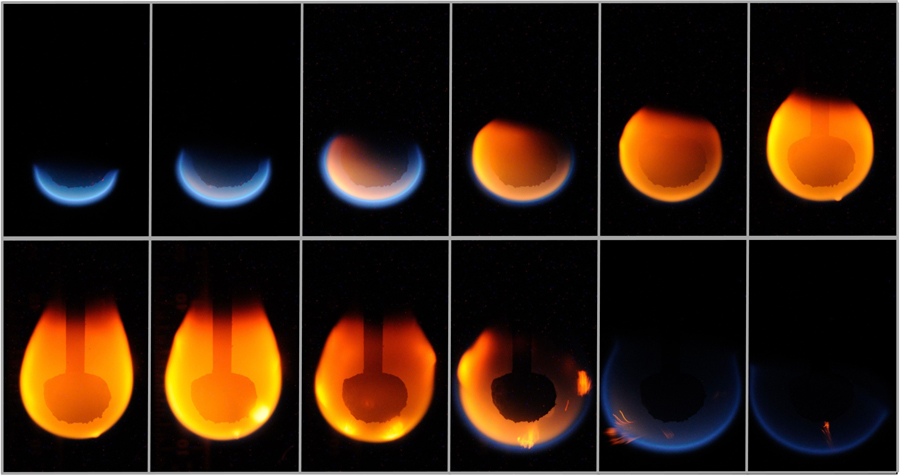Americans can feel safer in their homes today than they did decades ago thanks to studies and standards that have eliminated highly flammable materials from clothing, beds and furniture.
NASA relies on similar studies and standards to protect astronauts when selecting materials for spacesuits and spacecraft.
But fire behaves differently in space. Changes in gravity and airflow can alter the way it spreads and make it harder to extinguish. So how do engineers design fire-resistant homes for the Moon, where only 12 people have walked, or Mars, where no humans have even visited? How do they study flammability in these little-known environments?
The Solid Fuel Ignition and Extinction (SoFIE) project, a set of experiments launched aboard Northrop Grumman’s 17th cargo resupply mission to the International Space Station, could pave the way to a better understanding of fire in space. . SoFIE will operate in the station’s Combustion Integrated Rack, which includes a chamber where experiments can safely burn.
“With NASA planning outposts on other planetary bodies like the Moon and Mars, we need to be able to live there with minimal risk,” said Paul Ferkul, SoFIE project scientist at NASA’s Glenn Research Center. in Cleveland. “Understanding how flames spread and how materials burn in different environments is crucial to the safety of future astronauts.”
SoFIE will help NASA select materials and designs for spacesuits, cabins and habitats. The experiments will also help NASA identify the best ways to put out fires or smoldering materials in space as it prepares to go further and stay longer.
“On Earth, gravity has a profound influence on flames, but in the reduced gravity of space, fire can behave in unexpected ways and could be more dangerous,” Ferkul said.
The station’s unique microgravity environment allows scientists to study the true nature of flames that are isolated and unaltered by gravity. The resulting data, which could never be collected on Earth, can then be applied to mathematical models that predict how these materials would burn in lunar, Martian or other environments.
“SoFIE builds on previous NASA research on flammability,” said Lauren Brown, project manager at Glenn. “Like other flame studies, this research will focus on how things ignite, burn, and die out in space. It will provide a foundation for continued human spaceflight beyond the planet. low earth orbit.
SoFIE consists of five investigations to study the flammability of Plexiglas, cotton-based fabrics and other materials commonly used in spaceflight.
The five experiences
- Flame spread as a function of residence time will investigate stable and unstable flame spread using thin spaceflight materials. Varying the thickness of test materials helps scientists understand when a fire will grow or die out.
- The narrow-channel device will measure flame spread over thick, flat surfaces and compare the results with those of a device used on Earth to test the flammability of spaceflight materials.
- The limit of growth and extinction will focus on the growth, decay and extinction of the flame on the surface of a solid sphere. This will provide insight into how thick, round materials heat up internally and how airflow around a sphere affects flame spread.
- The material ignition and suppression test consists of a small combustion blower, a cylindrical material sample, radiant heaters, an igniter and supporting instruments.
- Research on the microgravity flammability of spacecraft materials will correlate data from Earth gravity flammability tests with data under ventilated microgravity conditions.
Although the goal of SoFIE is to study the fire safety of spacecraft, the data from the experiments could help improve fire safety on Earth. The data will add to the body of existing knowledge that could improve screening tests to evaluate fire-resistant materials for home, office, aircraft or other uses.
NASA plans to operate SoFIE until November 2025 and can accept proposals for additional experiments during this time.
The Biological and Physical Sciences Division of NASA’s Science Mission Directorate funds the SoFIE and related investigations.
Top image: To demonstrate the growth, decay and quenching of flames in space, a preliminary test called Burning and Suppression of Solids (BASS) burned a synthetic resin on the space station several years ago. The top row shows the flame growing, while the bottom row shows it dying out.

